You can never have enough magazines. Modern pistol shooters practice hard; compete in IDPA, IPSC, and Three Gun matches. They need reliable equipment. Personal-defense shooters need reliable, functional magazines at a fair price. In this installment, we are testing magazines for fit, function, reliability and durability. In common with recoil, striker, and hammer springs, magazines should be replaced from time to time. While new springs may help magazines retain some function, there is a time when cracked or bent feed lips demand the magazine be discarded.
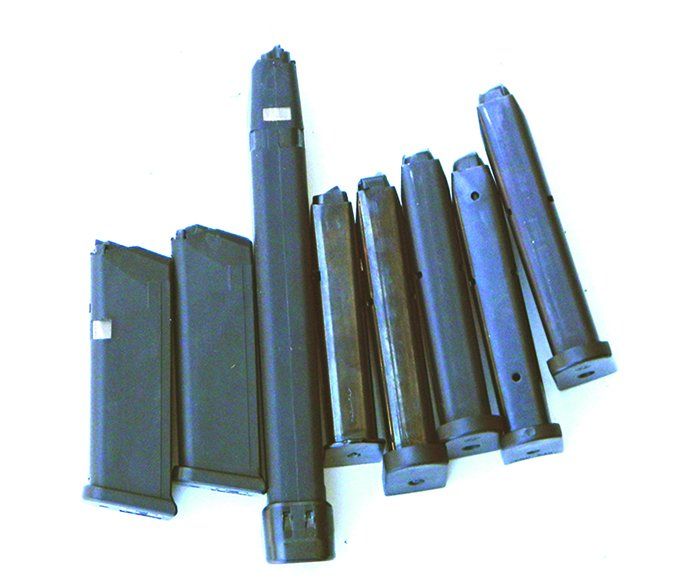
In this test, we followed the same criteria we used in testing 1911 magazines, except this test was more diverse in both handguns and cartridges. The handguns used in the test were proven examples, with few function exceptions. Since the firearms had long-ago proven reliable, there would be no confusion as to which part was responsible for the malfunction, the pistol or the magazine. We also used good-quality ammunition to test the magazines. In each case, we used at least two magazines of each type to bang on.
Using proven criteria and a team of experienced raters, we learned some magazines were durable and service grade; that is, we would be comfortable putting them into “service” in critical situations. We also learned others were okay for range use, but not critical use. In all of these cases, we recommend spending a little more for service-grade magazines across the board for all uses. We don’t think it’s advisable to mix low performers with high performers in this critical area of function.
Magazine Testing Criteria
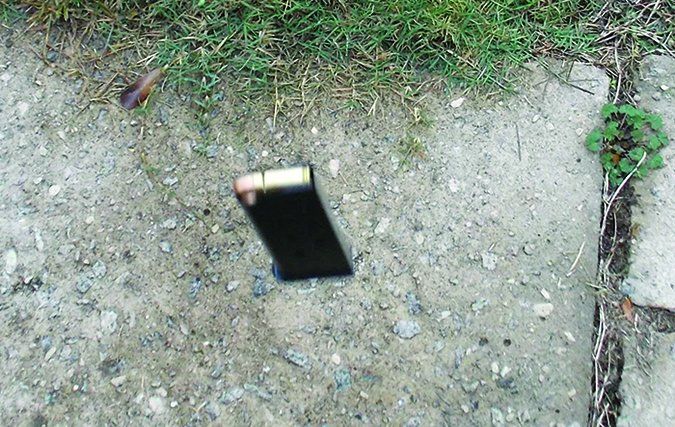
To test the magazines, our shooters first performed a visual inspection of fit, finish, welds, and other external factors. Then, we had shooters fit the loaded magazine into the magazine well and lock it in place with the slide closed. Next, we assessed the difficulty of ejecting an unloaded magazine when the release button is pressed, and then the difficulty, if any, of dropping the slide on a loaded magazine. Next, we checked feed reliability. Also, ease of loading and lack of follower binding were noted. We tested the magazines with standard full-metal-jacket bullets, jacketed hollowpoints, and +P loads when possible, depending upon the cartridge. We fired one full magazine load of each type in each magazine. After firing, the follower was checked for excess wear.
Next, we loaded the magazines and dropped them on a concrete pad from 4 feet, attempting a drop on the base of the magazine. Each magazine was given two drops. Then we left the surviving magazines fully loaded for six months with the proper ammunition. They had to come up shooting. Our experience in leaving 1911 magazines loaded for 12 months led us to believe that six months is more than adequate for this type of low-load testing.
Following, then, are several pistols for which we located aftermarket magazines and put the accessories through the wringer:
Tokarev TT33 7.62x25mm
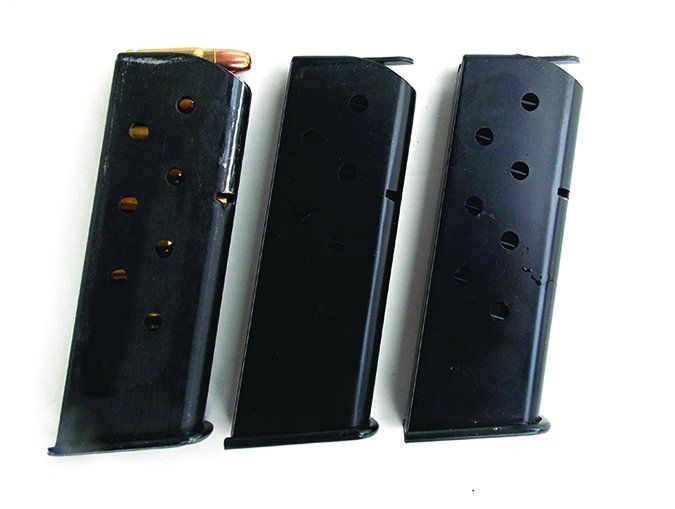
The Tokarev pistol is surprisingly popular and is even an occasional carry gun of one of our raters. The field of replacement magazines isn’t particularly broad with this pistol. The pistol itself was a used TT33 Romanian-build handgun made in 1953. To test its function, we fed it Sellier & Bellot 86-grain full-metal-jacket rounds (FMJs) and Wolf 85-grain jacketed hollowpoints (JHPs). We had three sets of magazines: original Tokarevs, 1953 manufacture, supplied with the Romanian pistol; “Made in Taiwan” magazines (and otherwise unmarked) obtained at a gun show, $22; and unmarked Tokarev magazines obtained from JGSales.comfor $20 each.
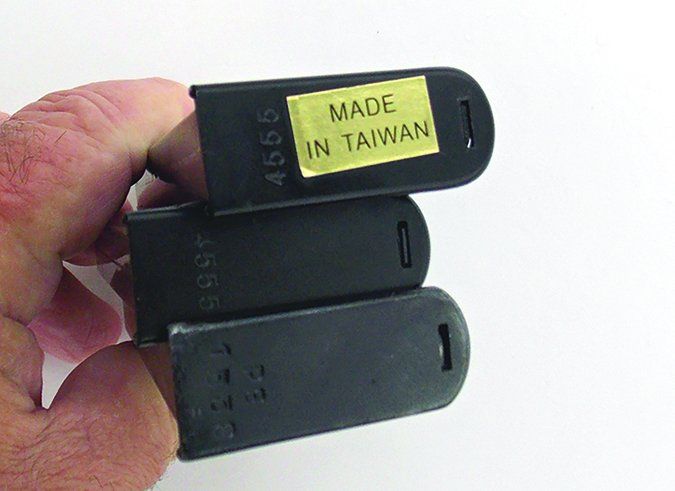
The original and the J&G Sales magazines appeared identical, save the J&G Sales magazine was as new. The original was well worn. The gun show magazine with the made-in-Taiwan sticker was similar; however, the weld line was rougher. The base pad seemed thicker as well. Fit and finish were good with all magazines. The magazines passed all testing, save one trial the Taiwan magazines failed. They would not lock the slide back after the last shot about half the time. We invested an extra 20 rounds, firing two at a time, to discover and isolate this defect. Because there are better, more reliable options for the same money, we don’t see a need to buy the unbranded version.
Romanian Tokarev Original:
GUN TESTS GRADE: A
J&G Sales:
GUN TESTS GRADE: A
Taiwan-Made Unmarked:
GUN TESTS GRADE: F
Browning Hi-Power 9mm Luger
The Browning Hi-Power is widely used for personal defense and is still in service in the Middle East and Afghanistan. Two of our raters have Hi-Powers on the front line for personal defense.
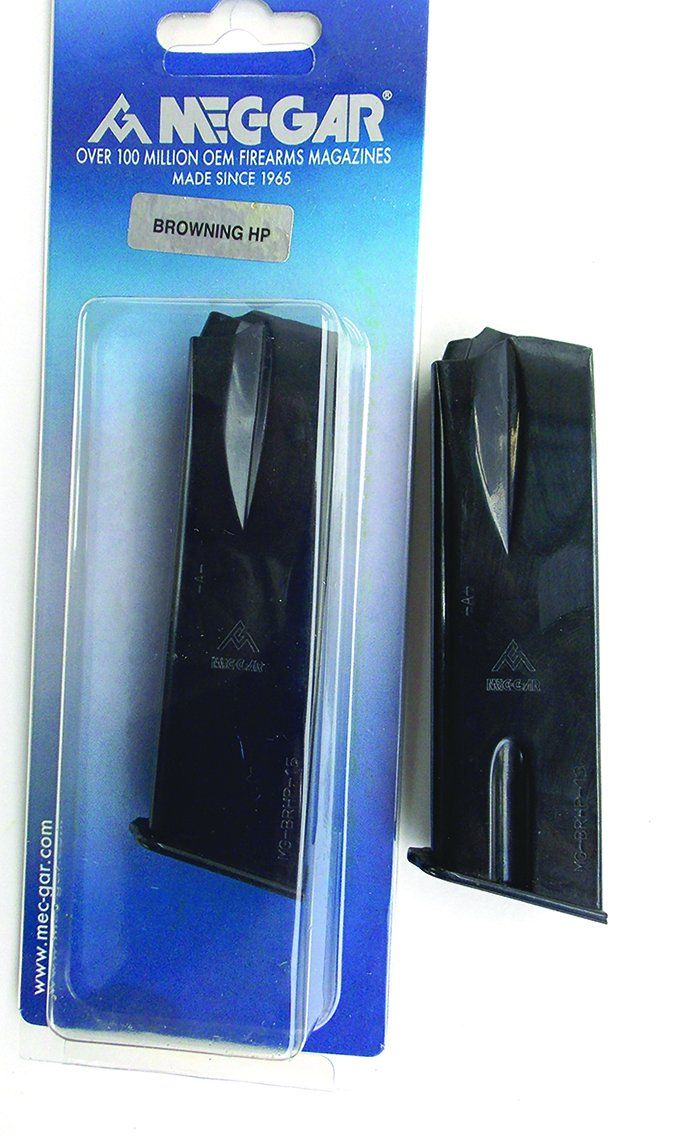
Our test gun was a Browning Hi-Power, 1977, Kareen ex-Israeli military model. Ammo choices were Winchester USA 115-grain JHPs and Winchester USA 124-grain PDX +P. The magazines were three Mec-Gar 13-round units from Brownells.com, $20 each; three Canadian John Inglis original 1944-manufacture units; two FNH Hi-Power units from Gunclips.net, $60 each; two 1977-issue original Hi-Power magazines; two additional Israeli-issue magazines that came with the Kareen pistol; and two 22-round Triple K units from Triplek.com, $36 each.
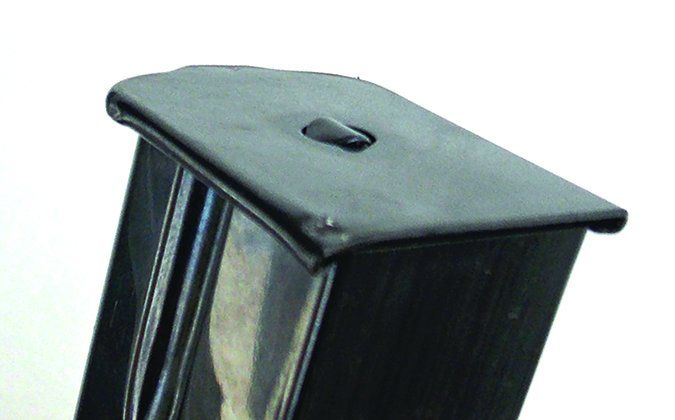
We noted a difference, an anti-friction coating, between the Mec-Gar magazines and others. During the act of loading magazines, as a cartridge rolls against the metal of the springs and magazine body and other cartridges, friction is produced. Mec-Gar claims you can actually feel the difference the anti-friction feature makes during loading, and we agree. Bottom line: All the magazines worked well, save for the Triple K. We could load only 19 rounds in the Triple K magazines, although they were advertised as 22-round magazines. We thought it would be fun to fire an extended magazine for the Hi-Power, but after several tries, we gave up. The magazine looked okay in finish and fit, but it refused to function to its promoted specifications. Also, we never got more than four cartridges in a row to feed in the Triple Ks, even after spraying lube in the magazine body and on the cartridges. Triple K magazines were not subjected to the 6-month test. All other magazines passed the test. We graded the FNH magazines down a half slot based on their high price. The Inglis magazines cannot be graded down based on poor finish because they are more than 70 years old. We also noted that the Hi-Power fed properly designed JHP loads without malfunction of any type, including the John Inglis.
Mec-Gar 13-Round:
GUN TESTS GRADE: A (Our Pick)
John Inglis 1944:
GUN TESTS GRADE: A
FNH from Gunclips.net:
GUN TESTS GRADE: A-
Browning 1977 Issue:
GUN TESTS GRADE: A-
Kareen Original:
GUN TESTS GRADE: A-
Triple K:
GUN TESTS GRADE: F
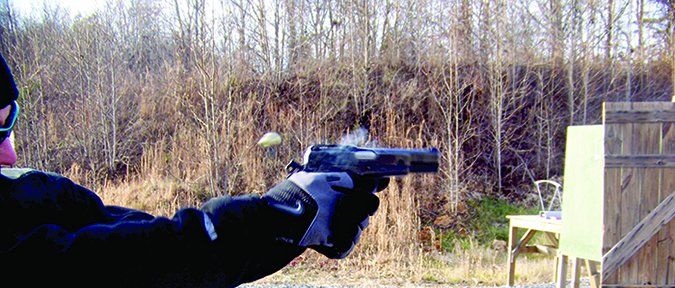
CZ-75 9mm Luger
We have used a lot of CZ handguns in several Gun Tests features, and a number of our raters use these handguns as carry guns. Across the board, magazines we surveyed for this pistol were each well made and well finished, but some were better than others.
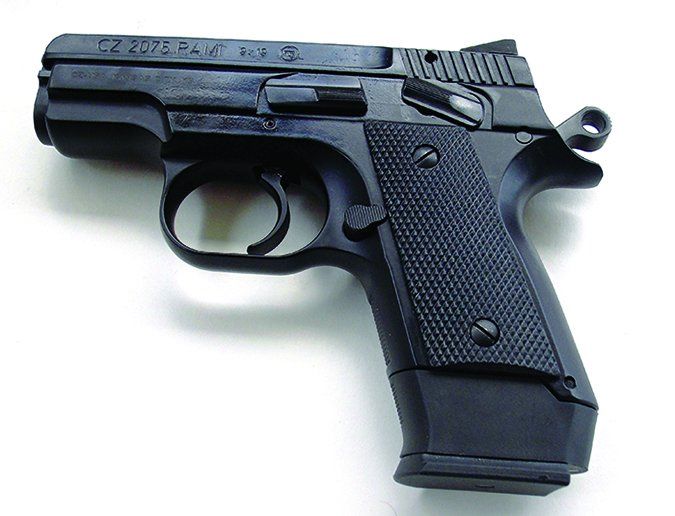
Our test pistols we used to check function include a CZ-75B 9mm, a pre CZ-75B 9mm, a CZ-P01 9mm, a CZ-75 D 9mm, and a Canik 55 9mm. Ammo used included Winchester USA 115-grain FMJ, Fiocchi 115-grain Extrema, handloaded Hornady 124-grain XTPs over Titegroup powder to produce 1090 fps, and Double Tap 115-grain JHP +Ps. As far as magazines, we started with the broad class of factory magazines from our test guns, basically using those magazines as standards. We also bought two factory CZ compact 9mm magazines from GalatiInternational.com, $44 each; two CZ-75 full-size magazines made by Mec-Gar from CheaperThanDirt.com, $20 each; and two CZ-75 compact magazines, also by Mec-Gar, $20 each from MidwayUSA.com.
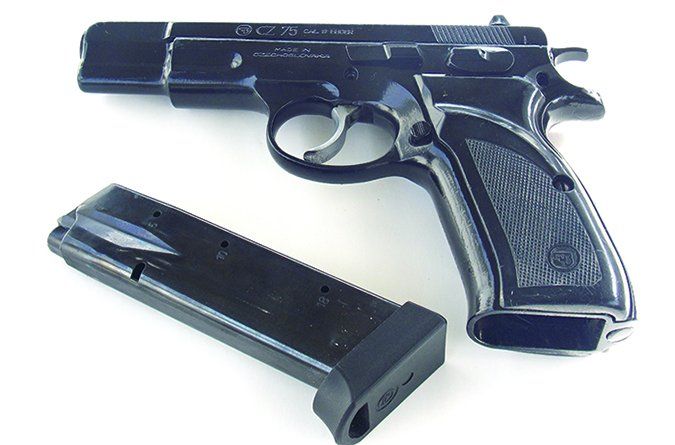
Factory-new magazines are much more expensive than the aftermarket Mec-Gars. Canik-brand pistols use Mec-Gar magazines, and we confirmed that Mec-Gar compact CZ magazines lock, load, and function in the full-size CZ-75 and the CZ-75 compact. A note on CZ-75 magazines: The original CZ-75 used a single locking slot in the magazine. Modern magazines use two. Modern magazines fit and function in older pistols, but not vice versa. While original types are available, if you own both types, it is best to order the modern magazines. We tested function using an AT-84 CZ-75 clone. While the magazines are unmarked and the level of fit and finish is not up to current Mec-Gar standards, they worked fine.
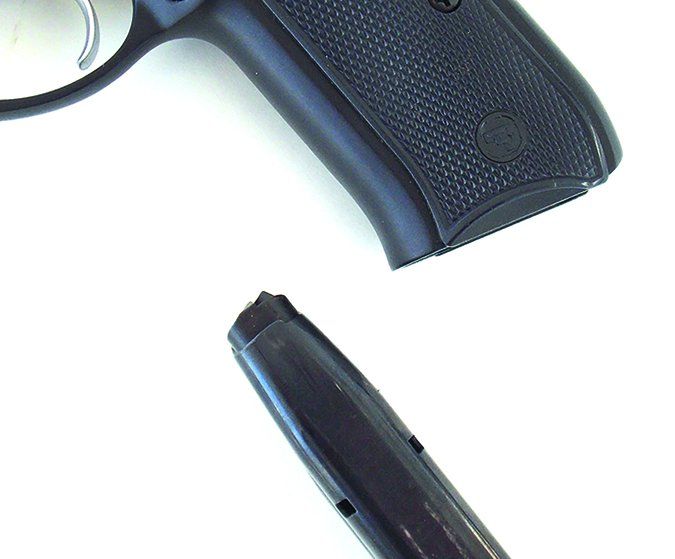
The CZ magazines appeared identical to the Mec-Gars; however, new production CZ magazines have a black follower, while Mec-Gar features a blue follower. Whoever actually manufactures the CZ-75 factory magazine, it is high quality, but pricey. All magazines passed the test, including the unmarked AT-84 magazines. The Mec-Gar magazines are better finished, but the older AT-84 magazines gave up nothing in performance. We rated the factory CZ magazine down a half grade based on the high price. The AT-84 magazines were rated down a half grade based on finish. We particularly liked the Rami’s compact magazine with finger shield that allows a longer grip and use of a longer magazine without drawback. Also, we like bumper-pad magazines in a service or holster gun. While they add to the height of a compact concealed-carry handgun, they make a difference when striking concrete.
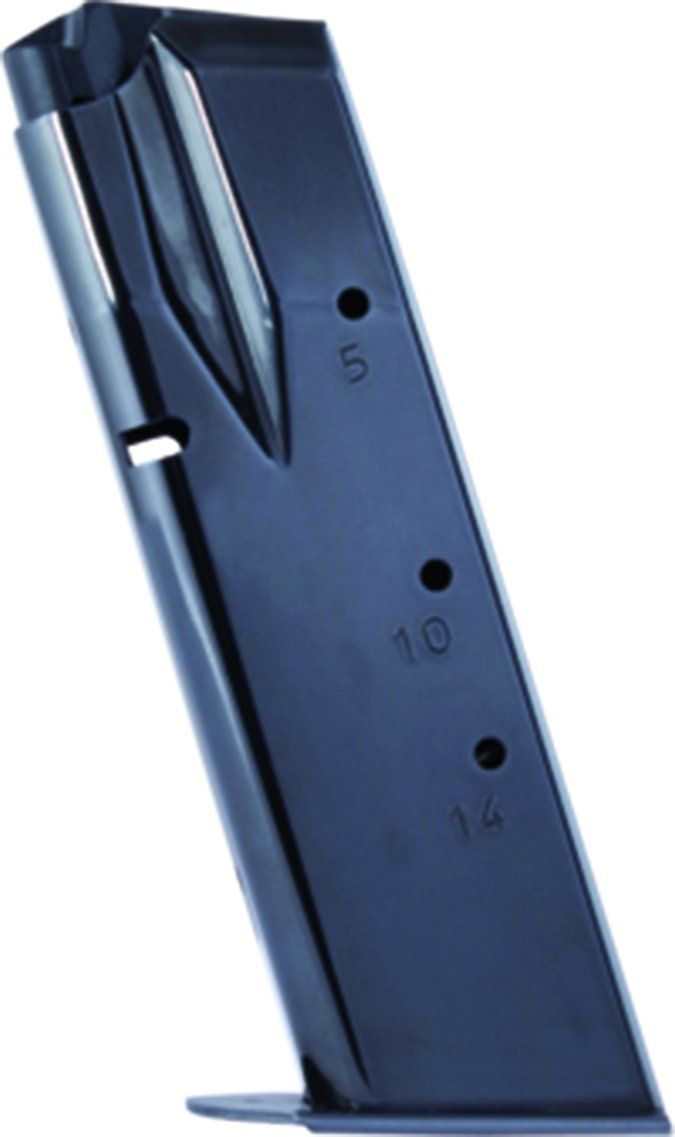
As an example, one of the older CZ-75 base plates cracked during the drop test, but we did not notice it until well into the test. The question was, should we rate it down for cracking (because of abuse in the test) or leave it alone because it worked in every test after cracking? We chose the latter.
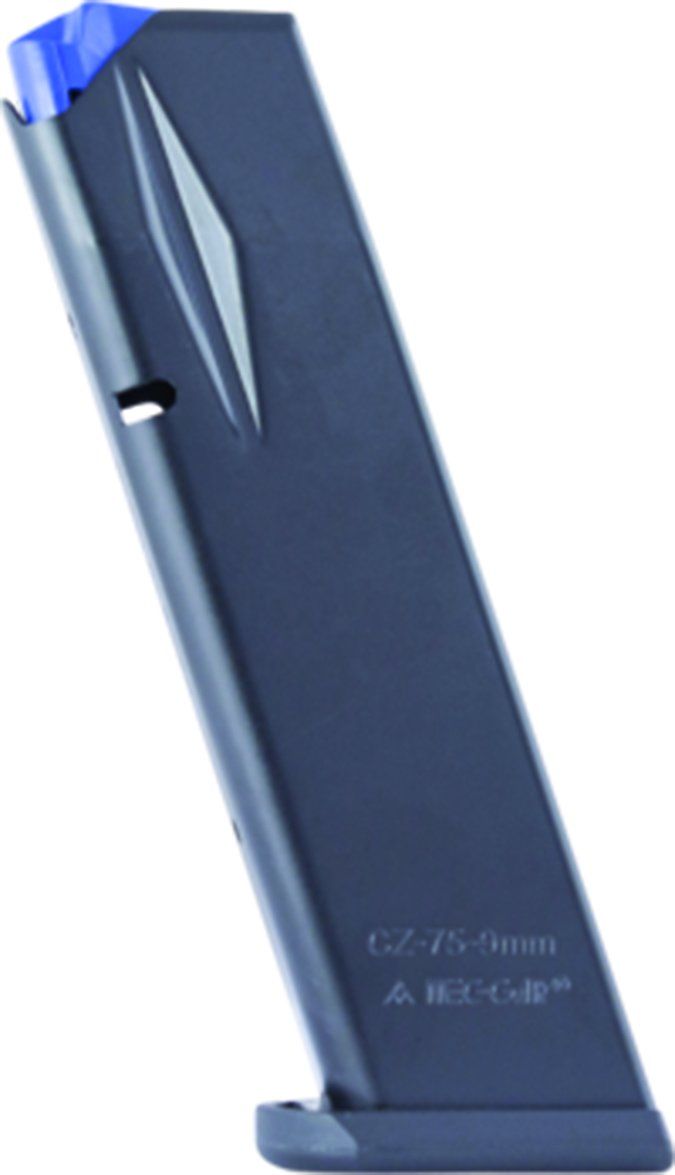
Mec-Gar CZ-75 Full-Size Magazine:
GUN TESTS GRADE: A
Mec-Gar CZ-75 Compact Magazine:
GUN TESTS GRADE: A
Canik 55 9mm Luger Magazines:
GUN TESTS GRADE: A
AT-84 Used Gun Magazines:
GUN TESTS GRADE: A-
CZ-75 Factory Magazines:
GUN TESTS GRADE: A-
Glock 17L
The Glock 17 has become an icon for reliability, despite its magazines having been through several generations. The current Glock 17 magazine is arguably among the most reliable feed devices ever manufactured. For a magazine to compete with the factory Glock magazine, the aftermarket unit would have to be less expensive or offer some advantage, as well as working perfectly. Of course, we used Factory Glock Magazines, $20 each, and we also tested MagPul 9mm 17-round magazines from MagPul.com, $16 each; KNS 9mm 17-round magazines from JGSales.com, $13 each; and ProMag 17-round magazines from CheaperThanDirt.com, $13 each.
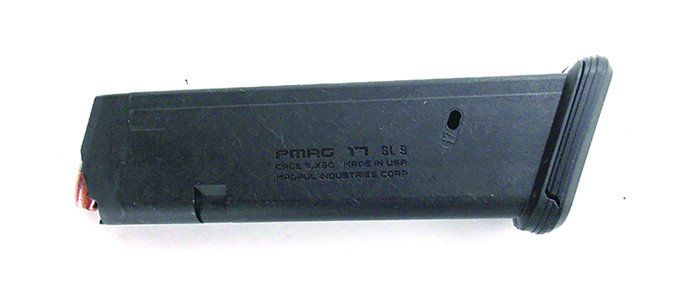
Our test handgun was a Glock 17L fed with Federal American Eagle 115-grain FMJs, Federal 150-grain HST bullets, and Federal 9mm Luger 115-grain JHP +P+ rounds. We also fed the mags into an MPA 9mm pistol configured to accept Glock magazines and put TomKat 158-grain roundnose lead bullets and Black Hills 115-grain FMJs into it. The MPA pistol was only tested with Glock , KNS, and MagPul magazines. The good news is the Glock and the big Masterpiece Arms pistol functioned perfectly with all loads.
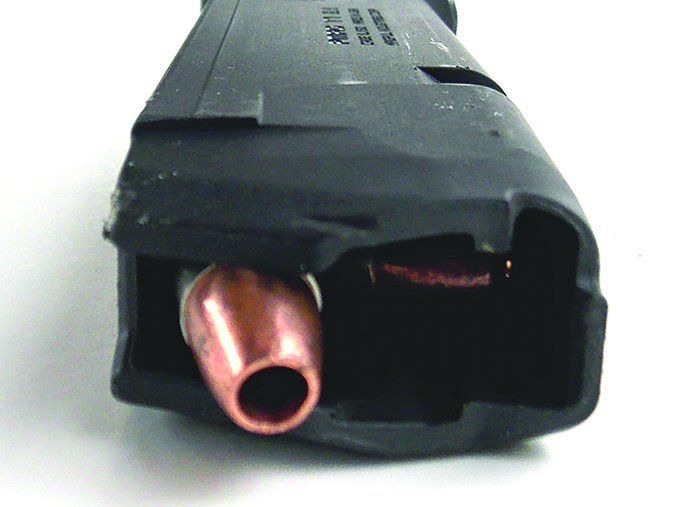
We felt that it was important to test the magazines with both the subsonic and +P loads preferred by different users. Subsonics have less recoil impulse, and the +P+ loads increase slide velocity and challenge the magazine to feed properly. The factory Glock is the best-made magazine as far as feel and finish and integrity. The ProMag was the cheapest in appearance. However, the drop test was not kind to the ProMag. The ProMag base plate, follower, and spring separated in both magazines, one on the first drop and the other on the second. Oddly, the 15 cartridges went to the left of the standing rater, and the follower was found about 5 feet away on the right. There are bushes and trees around the test site, but the magazine spring would have had to travel 10 feet or so to have been lost, but we never found it.
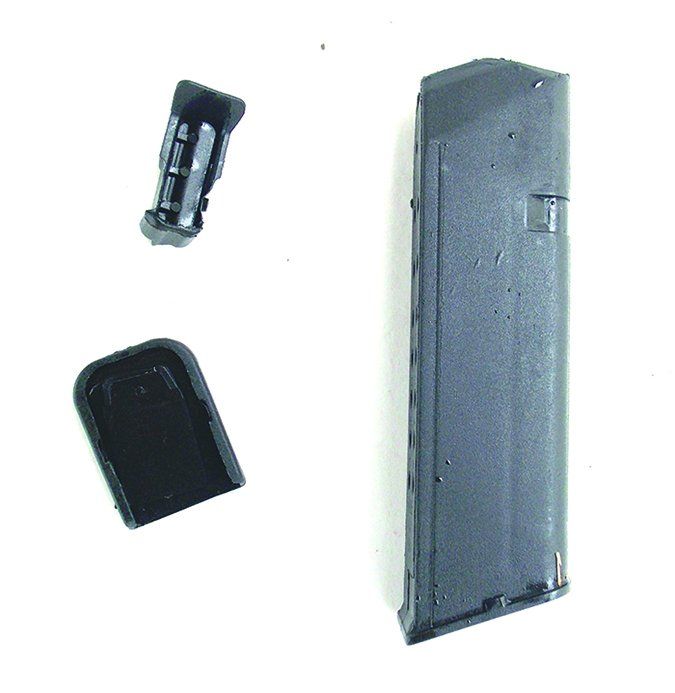
The MagPul suffered a qualified failure. After passing all firing tests, the MagPul failed the drop test. The cartridges were cocked in the feed mouth. Evidently, the magazine spring was depressed by the load of cartridges under inertia, and when it returned to full strength, the cartridge was pointing straight up. This occurred half the time. The drop test did not damage the MagPul, but it required some shaking to get it back into action. The KNS magazine suffered a number of short cycles with the +P+ ammunition. In many cases, professionals have recommended that a service magazine have the same name as the gun. In this test, that recommendation is given validity. For service use, we would recommend using Glock magazines in the Glock 17.
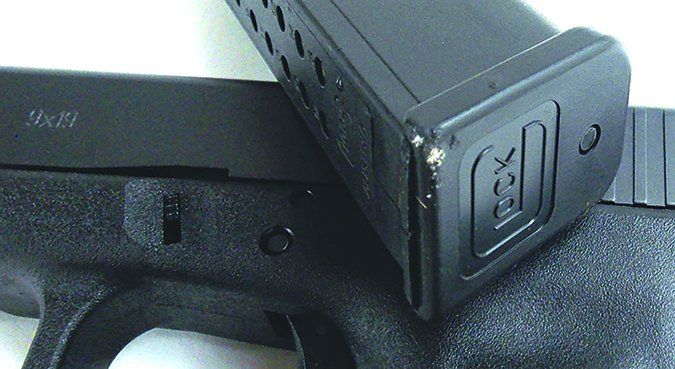
Factory Glock Magazine:
GUN TESTS GRADE: A (Our Pick)
KNS 17-Round:
GUN TESTS GRADE: B
MagPul 17-Round:
GUN TESTS GRADE: C
ProMag 17-Round:
GUN TESTS GRADE: D
Glock 22
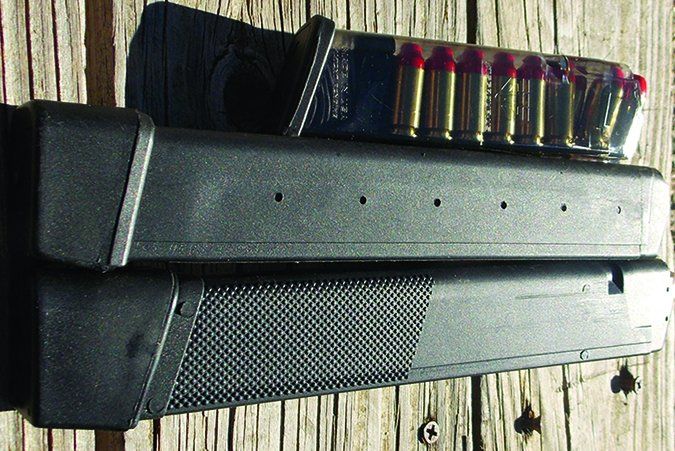
The handguns we used for this section included a Glock 22 and a Glock 35, both chambered in 40 S&W. The ammo used included Winchester 155-grain Silvertips, Black Hills Ammunition 180-grain JHPs, and Federal 180-grain SynTechs. The magazines were Glock Factory magazines, $35 each at Cabelas.com; Elite Tactical Systems magazines, $17 from CheaperThanDirt.com; Scherer extended 29-round magazines, purchased from a vendor at a gun show for $20 each; and the KNS extended 29-round magazine, purchased for $15 each, also at a gun-show vendor.
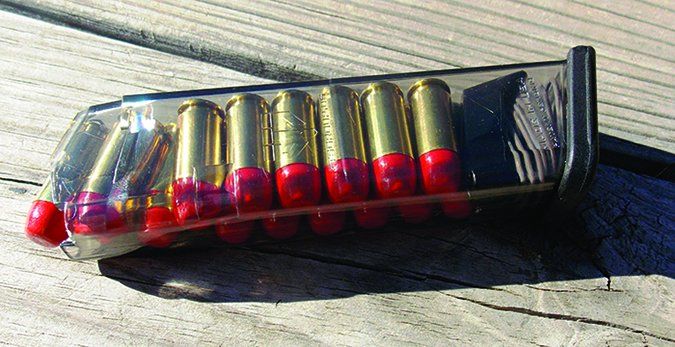
To cut to the chase, Glock factory magazines passed every test without fail and without question, even though the ones that came with our Glock 22 test gun are at least 10 years old. This old service pistol and its original magazines keep plugging. The Elite Tactical Systems magazine is affordable and features translucent plastic construction. It locked in place and seemed to fit and function well. Firing tests were good, with positive function. However each of the Elites failed the drop test. The magazine simply fell apart and ejected the cartridges. We were able to put one back together by really hammering the baseplate. On the second try, it failed as well. The Korean-made KNS magazines suffered short cycles, usually toward the middle of the magazine load. In addition to the short cycles, these magazines failed to lock the Glock 22 back about half of the time with all loads. We suffered one of the oddest malfunctions ever when dropping the KNS magazine. The top round sprung loose and reversed the nose to the rear. This odd problem never repeated itself. It is the type of thing that keeps gun testing interesting and even baffling. During the drop tests, this was the only failure. The short cycles cannot be tolerated for service, and neither could the failure to lock. As far as design goes, we really liked the magazine-roughening treatment on the side of the magazine body.
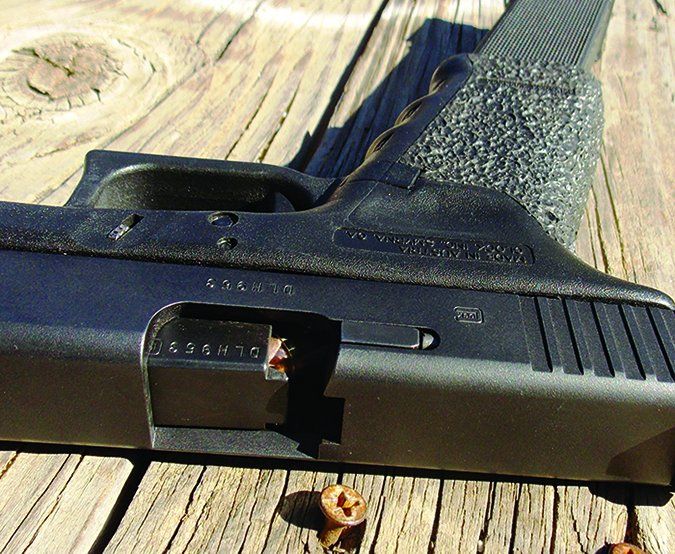
The Scherer magazine has only one locking cut-out, while the Korean magazine has two. The Glock has one cut-out. The Korean magazine has a metal insert similar to, but not equal to, the Glock. The Scherer does not. At any rate, the Scherer gave superior function and feed, but it did not hold the slide open half of the time. We did not subject any of the three aftermarket magazines — Elite Tactical, KNS, or Scherer — to a six-month test since they failed the function testing. Also, the Elite Tactical Systems magazines were destroyed during testing anyway.
Glock Factory 40 S&W Magazine:
GUN TESTS GRADE: A
Scherer Extended 29-Round Glock Magazine:
GUN TESTS GRADE: B-
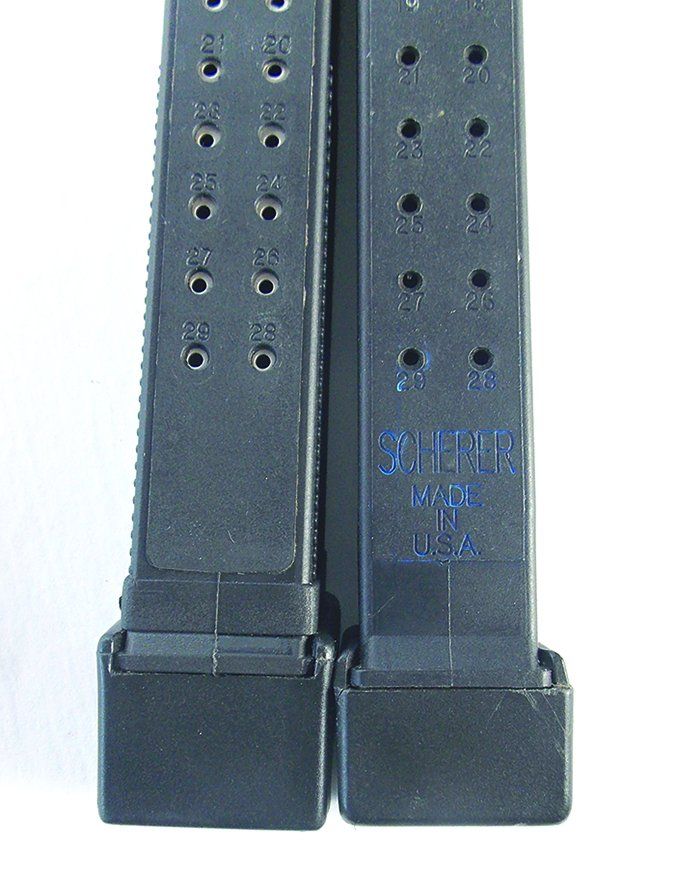
KNS Extended 29-Round Glock Magazine:
GUN TESTS GRADE: C
Elite Tactical Systems Glock Magazine:
GUN TESTS GRADE: F
Taurus PT92 AF
Our test handgun for this section was a used Taurus 92AF 9mm. We function-tested the magazines with Black Hills Ammunition 115-grain FMJs, Tomkat 158-grain RNLs, Federal HST 124-grain JHPs, and Winchester PDX 124-grain +P rounds. Purchased separately, Taurus-brand 17-round 9mm magazines are $27 at CheaperThanDirt.com. We couldn’t identify the manufacturer of the Taiwan-marked mags, so we’re unable to price them.
This pistol was purchased used with four magazines, two Taurus and two magazines marked Taiwan. This is our first experience with these latter magazines. During the test program, the Taurus magazines functioned and passed all testing. However, the Taiwan-marked magazines did not lock the slide open on the last shot in every instance in which we fired the pistol. Also, they failed the drop test, losing five to seven rounds in each drop. We tried downloading the Taiwan magazines to 15 rounds, and this did not help with the drop test. They never failed to feed, but we rated them down two grades for a failed drop test and a failed slide lockback.
Taurus PT92 AF Factory Magazine:
GUN TESTS GRADE: A
Taiwan-Marked PT92 AF Magazine:
GUN TESTS GRADE: C
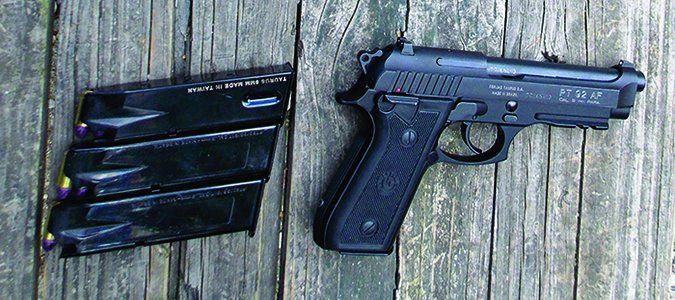
1911 9mm Magazines
We did not test 9mm magazines during the 1911 magazine test, largely based on space and time. The 9mm is immensely popular, and we felt that we would be remiss not to test these magazines at some point. As it turned out, there are a number of excellent choices.
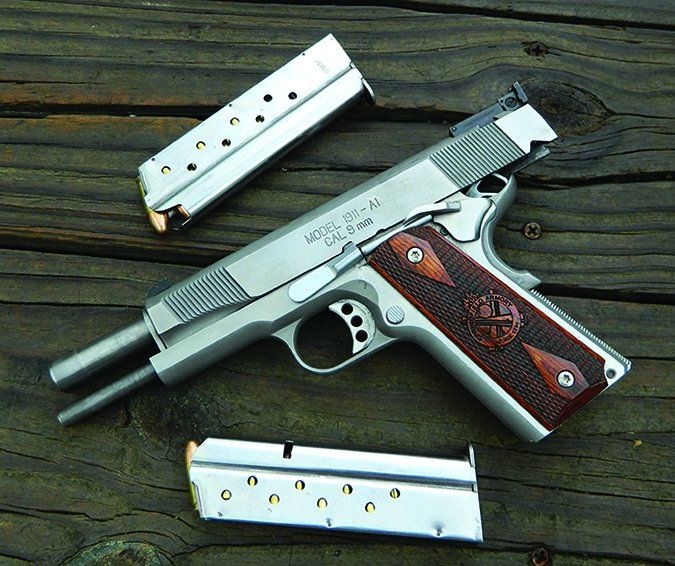
We tested with a Citadel Compact 9mm supplied from the factory with flush-fit Metalform magazines. We also used two Ruger SR1911 9mms and a Springfield Range Officer 1911 9mm. Ammunition included Black Hills Ammunition 115-grain FMJs, 115-grain Hornady XTPs over WW231 for a 1160 fps handload, and a +P handload with Hornady 115-grain XTP and WW231 for 1340 fps. Our test magazines included Ruger SR1911 9-round units, $40 each from Ruger.com; Checkmate 1911 9mm magazines, $22 each from TopGunSupply.com; Metalform 1911 9mm 10-round mags, $29 each from MidwayUSA.com; Mec-Gar 1911 9mm 9-round magazines, $18 each from MidwayUSA.com; and Metalform Officers Model magazines supplied with the Citadel 9mm pistol.
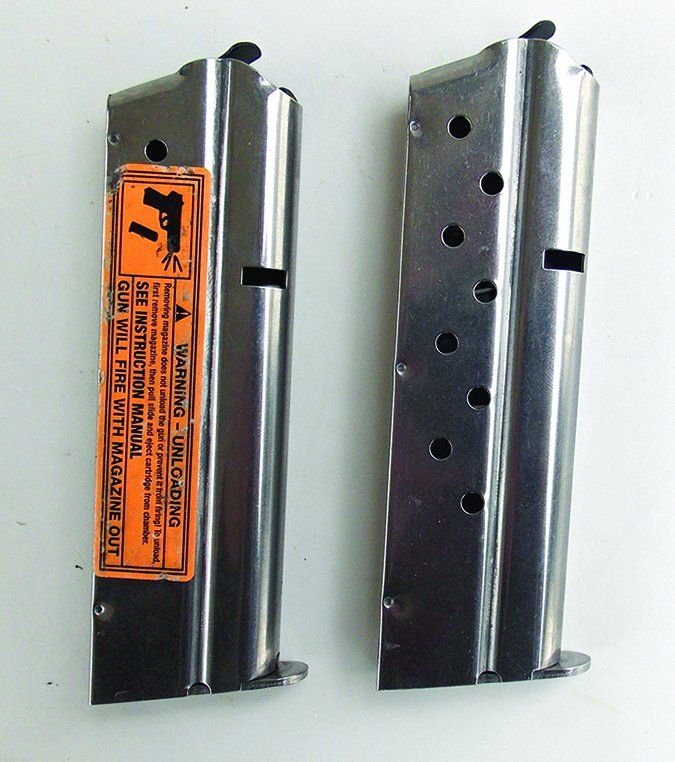
The 9mm Ruger-branded magazines showed excellent fit and finish. It was difficult to load nine rounds into them at first; we gave up and after a break-in period, we found that nine rounds could be loaded. A tight spring is beneficial to proper feeding. Just be aware of how stiff these springs really are. These magazines are great performers. However, we rated them down a half grade based on price. These magazines are manufactured by Checkmate for Ruger. Simply order the Checkmate and save money. The Metalform 10-round magazine attempts to stuff as many rounds as possible into the 9mm 1911. The magazines are well made and always function. The last round is a little hard to load. With 10 rounds in the Metalforms, it was sometimes difficult to slam the magazines home. They work well and are well made, but are not our favorites. We would be happy using a 9-round magazine plus one in the chamber for an easy-to-remember 10 total round count. The extra effort in slapping the magazine home isn’t worthwhile, we felt. With the pistol at slide lock, the problem did not exist, simply slam in ten rounds and begin shooting. The Mec-Gar magazines are a good buy and work well in all pistols tested. They offer a good price point. The Metalform magazines supplied with the factory Citadel pistol gave excellent performance. They are stainless steel and are comparable to the Ruger magazines.
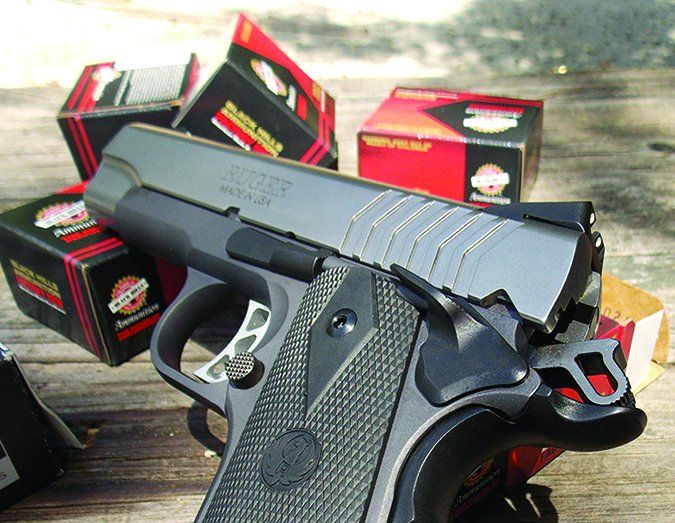
Checkmate 9-Round 9mm Luger Magazines:
GUN TESTS GRADE: A (Best Buy)
Ruger SR1911 9-Round 9mm Luger Magazines:
GUN TESTS GRADE: A
Mec-Gar 9-Round 9mm Magazines:
GUN TESTS GRADE: A
Metalform 1911 9-Round 9mm standard:
GUN TESTS GRADE: A
Metalform 1911 10-round 9mm:
GUN TESTS GRADE: A-
1911 38 Super Magazines
As with the 1911-style 9mm Luger magazines, we thought it worthwhile to check out the 38 Super chambering as well. For this section, we used two RIA pistols chambered for 38 Super and one Ruger SR1911 converted to 38 Super by Bar-Sto Precision. Into the guns we fed Federal American Eagle 115-grain JHPs in 38 Super, as well as SIG Elite 125-grain FMJs and SIG Elite 124-grain V Crown hollowpoints. The magazines were Colt Factory 1911 38 Super models that came with the RIA pistols and Mec-Gar 1911 38 Super units, which cost $15 apiece from CheaperThanDirt.com, and Triple K 15-round 38 Super magazines, $38 each from TripleK.com.
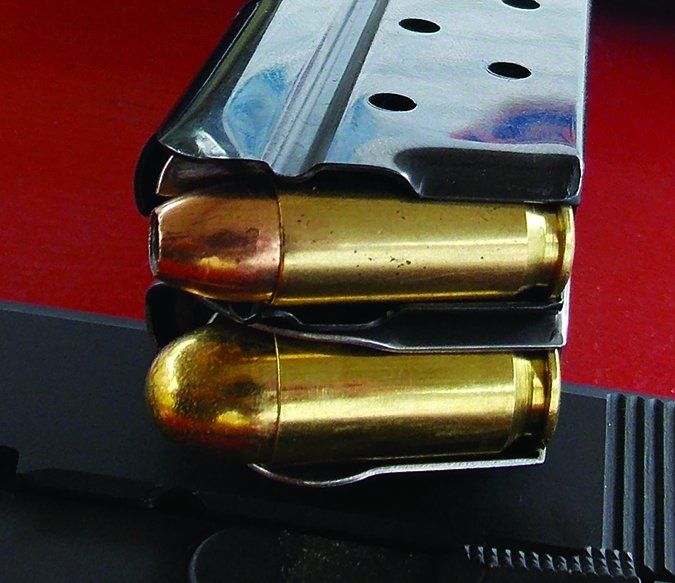
The Triple K 15-round magazines failed to lock the slide open on the last shot and were rated down and not tested in the long-term program. Colt Factory magazines are well made, but on occasion when loading, the follower scraped the inside of the magazine body and seemed to take a dive against the front of the magazine body. They never failed and passed all testing. The Mec-Gars caused no problems, so they get the nod as the best buy.
Mec-Gar 38 Super Magazine:
GUN TESTS GRADE: A
Colt Factory 38 Super Magazine:
GUN TESTS GRADE: A-
Triple K 15-Round Extended Magazine:
GUN TESTS GRADE: B
SIG P220
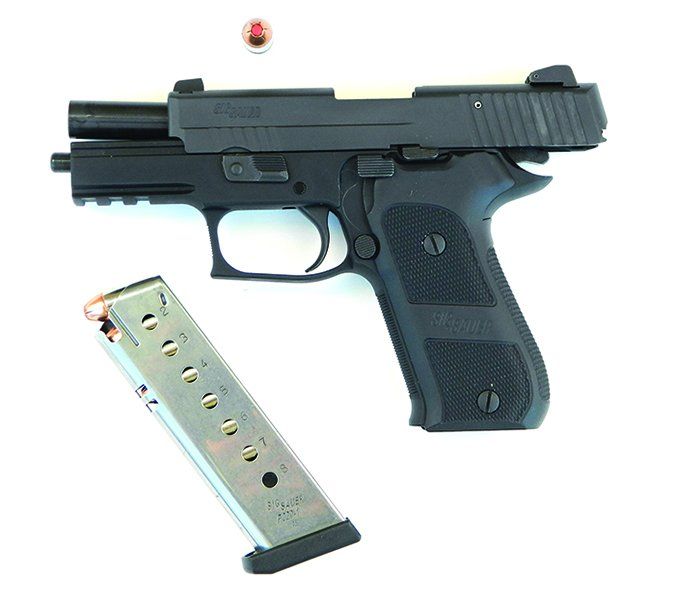
The SIG P220 45 ACP is a popular handgun. Short-barrel 45s have substantial slide velocity, and short cycles may occur with heavy loads if the recoil spring isn’t strong enough and the magazine spring’s ability to feed is outstripped by slide velocity. We examined a SIG P220 factory magazine in 45 ACP available from Brownells.com for $50 apiece and an ACT Mag Nickel P220 replacement magazine, which cost $20 from TopGunSupply.com. We slid them into a SIG Sauer P 220 Elite and function-tested with Hornady 185-grain Critical Defense and Hornady 230-grain XTP +P. In this case, the magazines tested gave excellent results. The SIG factory product is stainless steel and shows excellent workmanship. The ACT Mag did not have the same quality of finish, but its performance cannot be faulted. The much less expensive ACT Mag passed every test for half the money.
ACT Mag Nickel SIG P220 Magazine:
GUN TESTS GRADE: A (BEST BUY)
SIG P220 Factory Magazine:
GUN TESTS GRADE: A
Written and photographed by Gun Tests Staff.

























